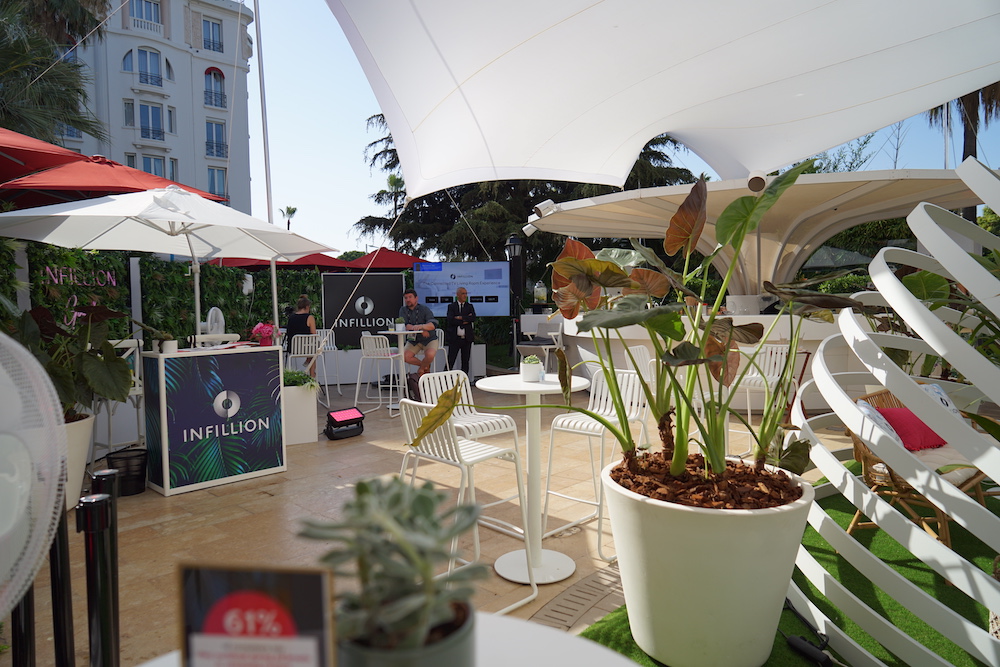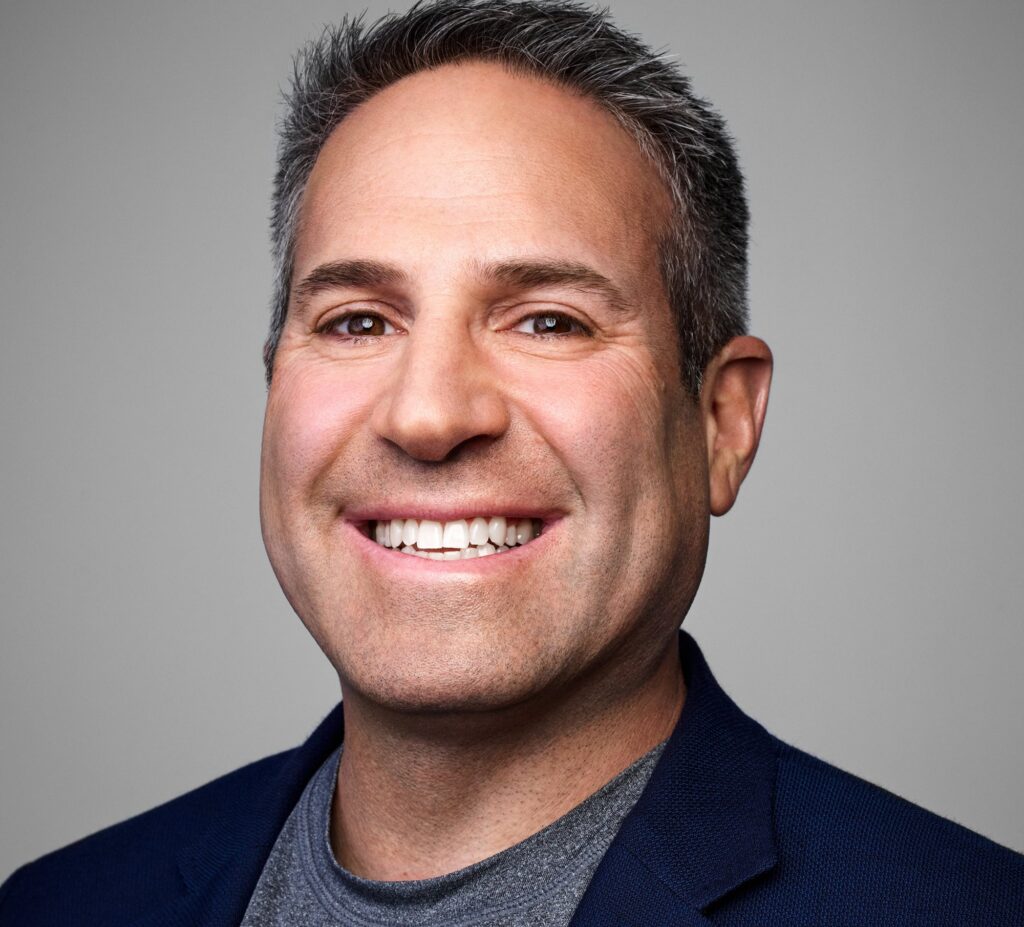Dozens of media and tech brands activated at the Cannes Lions International Festival of Creativity last month, from big tech on the beach to adtech along yacht row to pop-ups from newcomers along the Croisette, each looking to make a splash during the festival’s first in-person experience since the start of the pandemic. (ICYMI, here’s a photo tour of some of the standout brand activations).
But digital advertising company Infillion, formerly known as TrueX, Inc. and Gimbal, wanted to signal something new. A key objective was to allow people to touch, feel and experience the tech rather than simply talk about it. It also introduced its location-based “We Cannes” app at the fest, designed to raise funds for Ukraine Refugee Relief and reward attendees with tokens redeemed for swag when they participated in partner activities.
We spoke with Infillion CMO Laurel Rossi about the strategic marketing goals of the company’s Cannes presence, the challenges of marketing a tech brand and how it’s navigating the demise of third-party cookies.
Chief Marketer: Why was it important to create an experience for Infillion at Cannes?
Laurel Rossi, CMO of Infillion: Two things. One, we tried to create a presence. We also have a new brand, so obviously we wanted a big debut. There are conventions [at Cannes] that I think put people in boxes. You’ve got adtech in a yacht, the platforms around the beach. We decided we were going to be ourselves, and be a little bit more grown up than adtech row—which is not a bad thing, but it is what it is, and we wanted signal new.
Probably the most important part, though, outside of the space and the geography we picked, is the fact that we decided that we would… create interactivity, give people an opportunity to actually touch the tech, feel the tech, experience the tech, and not just talk about the tech. And, because we’re so consumer-forward, we wanted the person who was going through the experience to feel like a consumer as well.
CM: What are the challenges of brand marketing a tech product?
LR: Tech loves to talk about tech, and maybe sometimes not the outcome of the tech. We are so lucky. Streaming blew up, and we have a streaming business. Ecommerce also blew up during COVID and we own a commerce business. The biggest challenge is making sure that we stay grounded around what is relevant, coherent, and not talk too much about the tech only, and get to the outputs, the things that are either consumer-facing or customer-facing. I find that on the tech side, we tend to talk about the inner workings a lot.
And sometimes people make it super competitive. You’ll have two or three products, and they don’t even have to be in the same space, but they talk competitively. That’s just the nature of tech; you’re kind of groomed that way. I think we’re starting to ungroom. We’re starting to integrate into the fabric of people’s real lives.
CM: From an event marketing perspective, what are the strategic marketing goals of the Infillion experience?
LR: Our business plan was to launch the brand hot in the first six months and then hope that we would have a really good brand by the middle of the year so that we could focus on driving the two business units. [We] won’t ever stop building the brand. But what better way to be in front of all these brands and all our clients on the agency side than to be here? Once [we knew] everybody was coming, it made sense and we wanted to make it immersive. I hope people come, hang out and do the tech, and talk to our people rather than being talked to.
CM: We speak with marketers often about balancing data privacy with targeting consumers online. What’s your perspective on that?
LR: Both of our products are opt-in, so we don’t have a cookie problem. With our programmatic business, obviously there’s some cookies involved necessarily, but our whole business model is about opt-in consumer engagement. We are getting your permission up front, and then we have our clients transact based on those relationships. If you take a location app, you’ve already opted in. If you’re looking at our streaming products, same thing. We’ve gotten lucky, although we are looking at ways to put that opt-in feature in programmatic.
I don’t see cookies as a problem. We launched this study—2,500 consumers and what their habits are—and I think people are starting to talk about this a lot more: If you give the consumer more relevance, they’ll give you plenty of information. Not that we’re trying to steal it from them, but they’ll give [it to you]. They’ll give you time. They’ll give you attention. The principle we’re working on is, what can we give you in exchange for your time, attention and privacy? Make it opt-in.
CM: From a general marketing perspective, what trends should CMOs be looking at right now?
LR: There’s some myth-busting we need to do about the consumer in terms of what they’re willing to do to get more relevant, interesting, entertaining brand information, ads, whatever it is, in front of them. What they’re willing to trade in terms of their time, their attention and their data and information is astounding to me. That’s the rising trend. I feel like we don’t make enough of it, and I don’t think we really knew that. We just talk about how much privacy is a problem.
CM: What are the qualities a successful CMO should have to be successful in today’s business world?
LR: Bravery is at the top of the list. You cannot be afraid to be contrarian. You cannot be afraid to tell the truth. I think CMOs get a bad rap for a lot of reasons. They’re too creative. They’re too business-oriented. They’re too data-driven, whatever. At the end of the day, you have to be brave and be very clear on what your goal is and match those two things up.







